Successful Monday Commute to Orbit for Dragon Cargo Craft, Falcon 9 aces another Landing
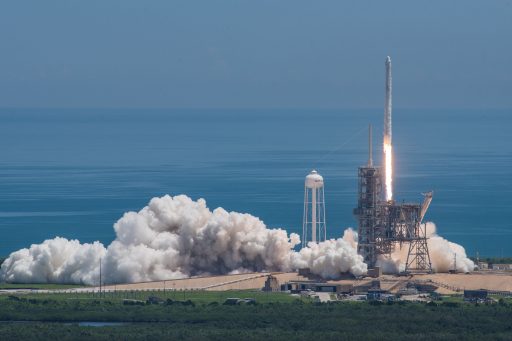
Mice, a supercomputer, small satellites and a new state-of-the-art particle detector roared into clear skies over Florida’s Space Coast on Monday aboard the twelfth regular Dragon cargo spacecraft launching atop SpaceX’s Falcon 9 rocket.
The 65-meter tall rocket lifted off from Launch Complex 39A at the Kennedy Space Center at 16:31 UTC, turning to the north east to deliver Dragon into the orbital plane of the Station for a two-day rendezvous. Embarking on its eleventh flight of the year, the third in support of ISS logistics, Falcon 9 fired its nine first stage engines for just under two and a half minutes before the first stage booster dropped away and made an immediate U-turn to accelerate back toward Cape Canaveral’s Landing Zone 1, coming in for a powered landing eight minutes after launch reaching its culmination with a gentle touchdown on four fold-out landing legs that had been recycled from a previous rocket.
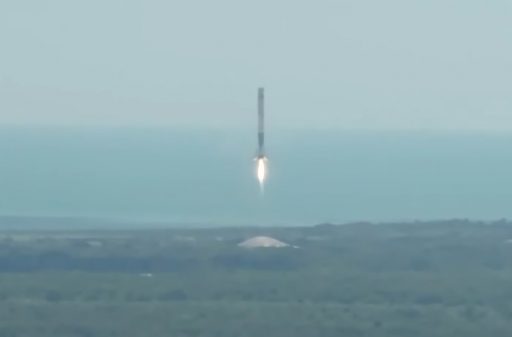
As the first stage went through its propulsive return, the rocket’s second stage fired its single MVac engine for six and a half minutes to dispatch Dragon into Low Earth Orbit, separating from the launch vehicle ten minutes after launch to begin its chase of the International Space Station. Set for a robotic capture on Wednesday, Dragon is booked for a 35-day stay at ISS to facilitate cargo transfers and experiments.
Dragon SpX-12 is setting a new record for the amount of research on an ISS visiting vehicle with 75% of the vehicle’s total cargo load dedicated to experiments and research gear. This is made possible by excellent systems performance and consumable levels on the Space Station, allowing cargo upmass budgeted for maintenance hardware and supplies to be re-assigned to science investigations to support a very busy science program aboard ISS with some 300 active investigations over the next six months.
>>Dragon SpX-12 Cargo Overview
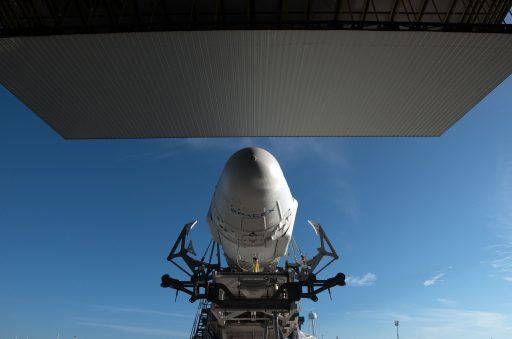
The Dragon SpX-12 spacecraft is loaded with 2,910 Kilograms of cargo, making it one of the heavier Dragons heading to the International Space Station. Bolted into the spacecraft’s trunk section is the 1,258-Kilogram Cosmic Ray Energetics and Mass Instrument (CREAM) – the newest addition to the Space Station’s astrophysics instrument suite that, among others, comprises the recently launched NICER studying ultra-dense neutron stars, CALET as a high-energy detector for X- and gamma-rays, and the AMS-2 particle detector as the flagship, having detected its 100 billionth particle earlier this year.
CREAM, housing a stack of five detectors working in unison, is designed to measure ultra-high-energy particles, expanding the AMS-2 energy range by several orders of magnitude to help explain some of the peculiarities in the cosmic energy spectrum – in particular an unexplained decline in the observed spectrum where particle theory would not predict such a decrease, a question that has been puzzling scientists for decades.
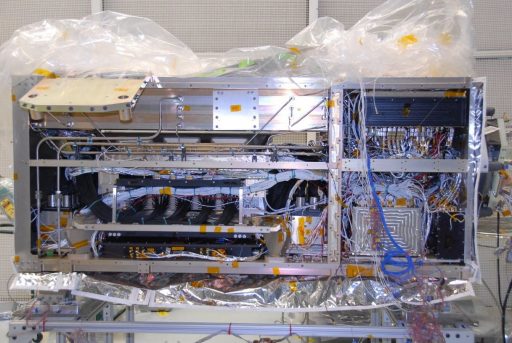
The overall goal of the CREAM experiment is stated as ‘extending the energy reach of direct measurements of cosmic rays to the highest energy possible to investigate cosmic ray origins, acceleration and propagation.’
The collection of such measurements is inherently difficult given the low flux of particles with ultra-high energies – meaning particles with energies of interest are few and far in between, requiring either large detectors or long exposures to collect statistically relevant data. CREAM has amassed 161 days of measurements as part of high-altitude balloon missions and the re-packaged sensor headed to ISS will deliver the long-term measurements needed to provide a definitive quantitative assessment of the high-energy spectrum between 1010 and 1015 electron-volt.
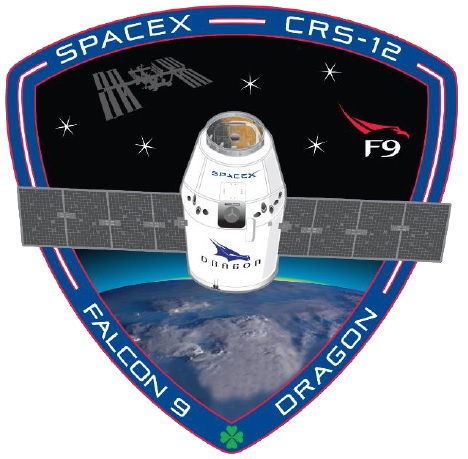
1,652 Kilograms of cargo are packed into the pressurized section of the Dragon spacecraft – 916kg of science investigations, 339kg of vehicle hardware, 220kg of crew supplies and 83kg of computer and spacewalk hardware. Riding aboard the Dragon are two groups of mice, one in the U.S.-developed Rodent Habitat and the other using Japan’s Mouse Habitat Unit to participate in a study of musculoskeletal and neurovascular changes brought on by extended stays in microgravity, acting as model organisms for humans and aiding the development for countermeasures needed on future long-duration space missions.
Three powered Polar freezers are aboard the Dragon holding a range of biological samples to be studied in the unique environment offered by the Space Station, though the some space inside the freezers is taken up by ice cream treats for the Station’s six-person crew. Research delivered by the SpX-12 Dragon includes a novel study of a protein implicated in Parkinson’s disease, attempting to grow large, pristine crystals of the target protein to enable scientists on Earth to study its atomic structure and potentially lead to therapies that could prevent, slow or even stop the progression of Parkinson’s.

A supercomputer hitching a ride on the Dragon will operate on ISS for the next year to test out techniques of dealing with in-space radiation through a software algorithm instead of heavy radiation shielding, potentially providing a solution for future onboard computers taking probes and humans into the depths of the Solar System. Other experiments riding on Dragon aim to grow bio-engineered lung tissue, track how potentially harmful microbes spread in space, and examine how plants protect themselves from stress factors encountered in space; also aboard the spacecraft are new plant pillows for the Station’s Veggie facility to continue working on in-space cultivation techniques needed for missions to distant targets.
Dragon SpX-12 is the last of the original Commercial Resupply Services contract awarded to SpaceX; however, the contract was extended in 2015 to bridge a gap to the CRS-2 contract round, giving both SpaceX and Orbital ATK additional CRS-1 mission. The spacecraft flying SpX-12 is expected to be the last newly-built Dragon 1 vehicle with subsequent CRS-1 missions through SpX-20 using refurbished spacecraft that have previously flown in space.
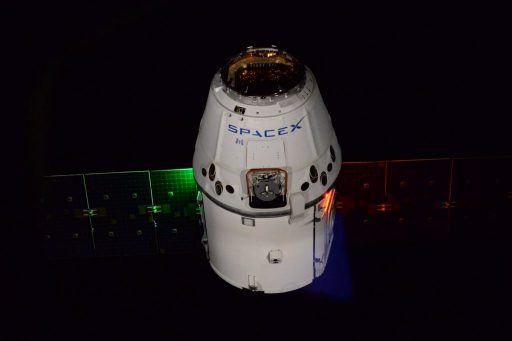
NASA originally specified in the CRS contract that missions are to be flown only by new spacecraft but cleared the way for re-use missions after SpaceX provided detailed technical rationale for Dragon’s ability to support multiple mission cycles.
Re-using Dragon’s comes with a twofold benefit – NASA will pay less per mission as refurbishment is much cheaper than building new vehicles and SpaceX will be able to re-focus resources on the production of Dragon 2 spacecraft that will fly under CRS-2 and NASA’s Commercial Crew Program.
Monday’s launch marked the end of an extended lull in launch activity from the U.S. Eastern Range that completed a two-week maintenance period in July to conduct invasive systems upkeep and upgrades that could not be easily done with an active range – requiring launch operators to stand down. SpaceX used the break for continued demolishing work on the former Space Shuttle Rotating Service Structure at LC-39A to prepare the facility for the inaugural Falcon Heavy mission as well as the start of crewed launches of the Falcon 9 set to begin next year.
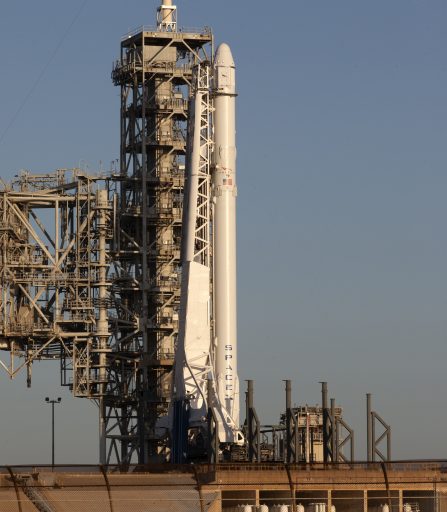
Monday’s launch also introduced a new version of the Falcon 9 Full Thrust vehicle known as Block 4 – the last incremental upgrade before Block 5 rolls out as the final version of the Falcon 9 that will have a frozen design as NASA requires at least seven flights of the vehicle with no changes before placing a crew on the rocket.
Block 4 second stages were introduced in May of this year, implementing a permanent fix for the potentially dangerous Composite Overwrapped Pressure Vessels that were implicated in last year’s on-pad explosion at Space Launch Complex 40.
Identified by serial number 1039, Monday’s first stage was the first Block 4 booster launched by SpaceX, featuring some minor changes to the booster’s structure like a bolted engine section and provisions for easy conversion of a Falcon 9 first stage to a Falcon Heavy side booster. Another novelty on Core 1039 is the use of re-used landing legs that had helped a previous core stage make a safe touchdown after dispatching a payload toward orbit.
The distinction between Falcon 9 FT Block upgrades has been fuzzy in the past as SpaceX typically implements changes on a flight-to-flight basis as new hardware becomes available – the Titanium grid fins that debuted earlier this year are a prime example of Block 5 technology flying on a Block 3 first stage. Another instance is the 1029 core that became the second Falcon 9 first stage to be successfully re-flown on an operational mission. Technically a Block 3 booster, the vehicle flew with a number of Block 5 parts when making its second trip toward orbit.
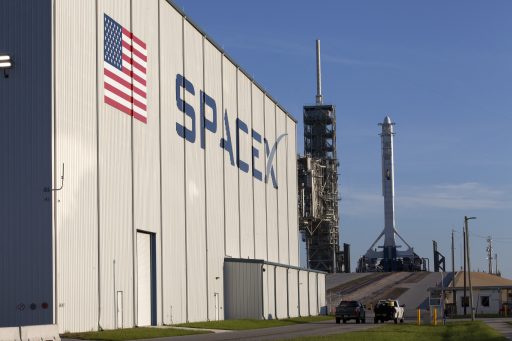
Block 5, the finalized Falcon 9, will implement a performance upgrade realized by operating the Merlin 1D engines at a higher thrust setting, now referred to as Merlin 1D++ as the engine went through a number of thrust upgrades starting from the baseline Falcon 9 v1.1 version. The Block 4 vehicle flown on Monday possibly used a thrust setting between the 756kN (Merlin 1D+) and the planned Merlin 1D++ sea level thrust of 845kN.
The Block 5 version of Falcon 9 will also implement a number of changes to permit rapid turnarounds between missions such as retractable landing legs, a re-usable heat shield protecting the engine section, more durable Titanium grid fins, a new thermal coating around the first stage, and a tweak to the flight software that will enable boosters to fly an optimized angle of attack during atmospheric descent in order to lower fuel requirements for landing.
>>Falcon Launch Vehicle Overview
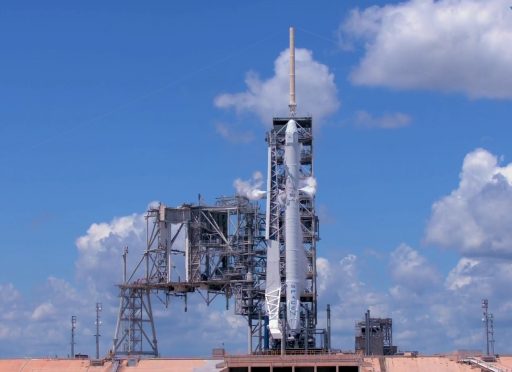
Monday’s Falcon 9 launch enjoyed a particularly smooth countdown operation, starting when the launcher was transitioned into its vertical position in the pre-dawn hours following a late-cargo loading campaign that involved the various time-critical experiments headed to ISS including the ‘Mousetronauts.’
Falcon 9 received a clean bill of health via a multi-hour checkout campaign and proceeded into its automated countdown sequence at T-1 hour to receive over 500 metric tons of sub-cooled Liquid Oxygen at -207°C and chilled Rocket Propellant 1 at -7°C.
Tanking went through a carefully throttled sequence to ensure Falcon 9 would reach flight mass only about two minutes before launch. By that point, Dragon had been configured for liftoff, Falcon 9 was running on internal power, the Strongback was primed for rapid retraction and the rocket’s autonomous flight termination system had been armed. Loading of pressurization gas ended at T-90 seconds and Falcon 9’s computers assumed control of the countdown at T-1 minute to oversee the final pressurization of tanks and the ignition of the nine Merlin 1D engines.
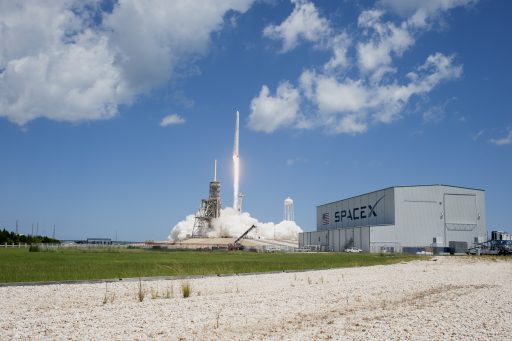
Soaring to a thrust of over 700 metric-ton-force, Falcon 9 lifted off the former Saturn V & Space Shuttle launch pad at precisely 16:31:37 UTC, balancing in a vertical posture for 15 seconds before pitching over to attain a north-easterly heading for a fast trip across the Atlantic Ocean.
Guzzling down 2,500 Kilograms of densified propellants per second, Falcon 9 enabled Propellant Utilization half a minute into the mission and passed Maximum Dynamic Pressure at the T+68 second mark, throttling back on the up-rated engines for a brief moment to reduce stress on the ascending rocket.
MECO – Main Engine Cutoff – occurred two minutes and 25 seconds into the flight after the first stage accelerated the rocket to a speed of 1,656 meters per second. The two stages separated by means of pneumatic pushers three seconds after MECO, parting ways 66 Kilometers in altitude with the first stage entering an immediate U-turn to fly back to Cape Canaveral while the second stage headed into start-up mode to continue towards orbit.
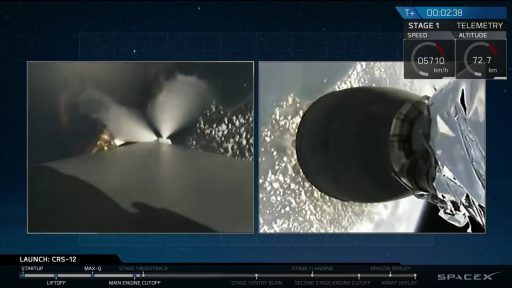
The 95,000-Kilogram-force MVac engine of the second stage came to life two minutes and 37 seconds into the flight, firing up on a planned burn of six minutes and 38 seconds to send Dragon into its target orbit. Passing 110 Kilometers in altitude just after T+3 minutes, Dragon separated its protective Nose Cone as aerodynamic forces were no longer a danger to the delicate Common Berthing Mechanism on the top side of the spacecraft.
With the second stage on its way to orbit, the 47-meter long first stage started its three-burn return to Cape Canaveral, wasting no time after separation to begin its powered return via an initial flip started by the vehicle’s cold gas thrusters and then assisted as the Center Engine lit up on the boost-back burn 13 seconds after staging. The center was joined by two outer engines after the booster was pointed to the correct direction in order to reverse course and accelerate back toward the Cape.
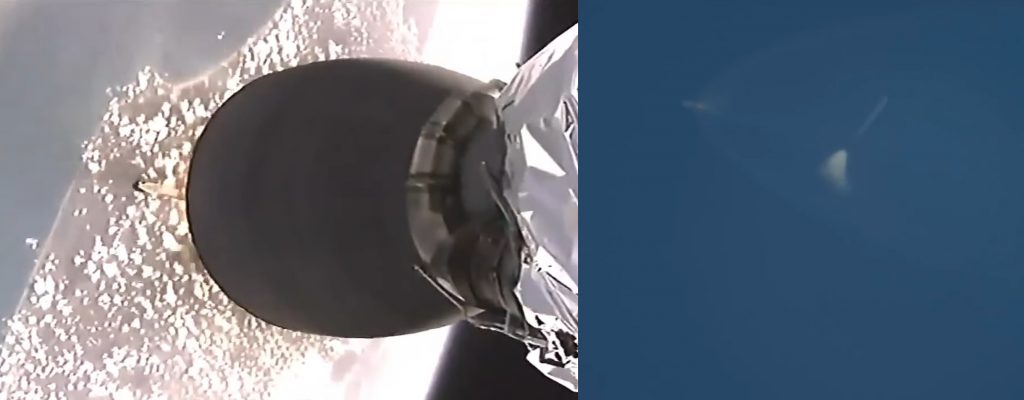
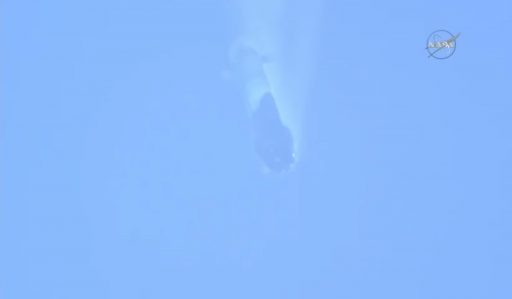
After the 50-second boost back maneuver, the first stage coasted outside the dense atmosphere, peaking some 118 Kilometers in altitude and maneuvering back around to point the engine section toward the direction of travel. Falling back toward Florida at supersonic speed, the core fired up again at T+6 minutes and 8 seconds, using a staggered ignition sequence to maintain good control through the ignition transients and firing for 14 seconds to slow down by around 368 meters per second from an initial speed of Mach 3.6.
Live views from the core stage clearly showed the vibration of the booster in the entry environment and the trans-sonic phase as the vehicle went through the sound barrier for the second time. The four actuated grid fins on the booster were in charge of keeping the vehicle stable & on-course for a 50-second unpowered descent through the atmosphere before the center engine lit up seven minutes and 15 seconds after launch for the final landing maneuver.
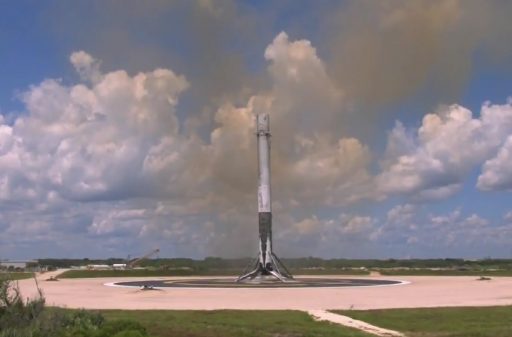
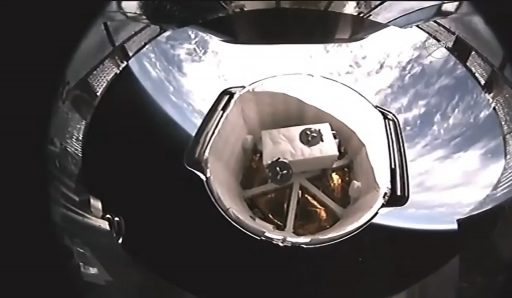
Booster #1039 deployed its four previously used landing legs in the final seconds of its descent and made a picture-perfect touchdown at Landing Zone 1 after a round trip of seven minutes and 45 seconds, marking Falcon’s second fastest LZ-1 landing to date as SpaceX continues to reduce margins to make the return more efficient.
Monday’s landing puts SpaceX 14/19 for first stage landings overall and 6/6 for land-based returns; now with a streak of ten successful recoveries in a row.
While all eyes were on the first stage’s return, the second stage performed admirably to finish Dragon’s high-speed commute to orbit, shutting down just over nine minutes after launch when sensing it had reached its target orbit of around 200 by 360 Kilometers, inclined 51.6 degrees. The 10,600-Kilogram Dragon was separated ten minutes after taking off from Florida and successfully primed its propulsion system and unfurled its solar arrays to head off on its two-day link-up with the orbiting laboratory.
A series of orbit-raising maneuvers is on tap on Monday and Tuesday to maneuver Dragon into an orbit 400 Kilometers in altitude where the vehicle will be catching up with ISS from behind and below. Capture by the Station’s robotic arm is planned at 11 UTC on Wednesday with berthing to the Station’s Harmony module later in the day to mark the start of a five-week stay.

